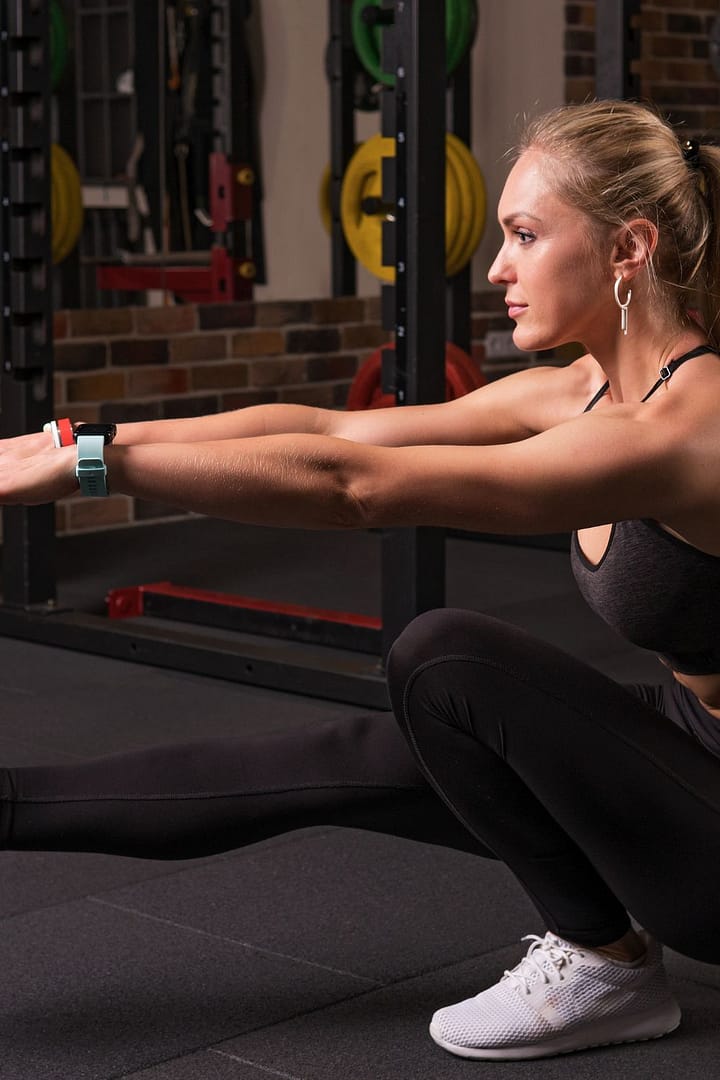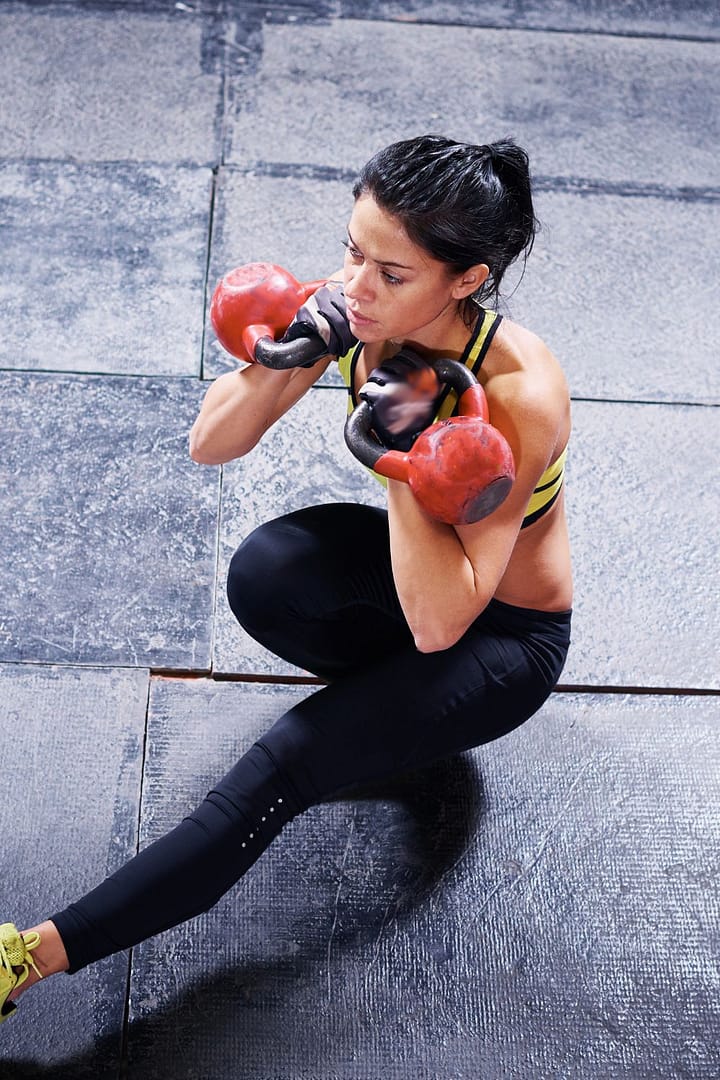If you’ve ever attempted a single-leg squat, you know that it can be a challenging exercise. Going down might seem manageable, but when it comes to rising back up, many people find themselves struggling. The key to mastering this exercise lies in targeting the right muscles and building the necessary strength. In this comprehensive guide, we will delve into the world of single-leg squats, exploring the muscles involved, the techniques to perform them effectively, and essential tips to help you conquer the ascent. Let’s get started.
Table of Contents
ToggleThe Importance of Single-Leg Squats
Before we dive into the specifics of the single-leg squat, it’s essential to understand why this exercise is valuable and how it can benefit you.
Single-leg squats, also known as pistol squats, are a fantastic lower-body exercise that challenges your strength, balance, and mobility. They are an excellent addition to your fitness routine for several reasons:
- Functional Strength: Single-leg squats mimic real-life movements where we often have to rely on one leg for support and strength, like climbing stairs or picking up objects.
- Balance and Coordination: Performing this exercise improves your balance and coordination, which can be beneficial in various sports and daily activities.
- Leg Strength and Muscle Development: It targets multiple muscle groups in your legs, including your quadriceps, hamstrings, and glutes, helping you develop powerful and well-defined legs.
- Core Engagement: Single-leg squats engage your core muscles to maintain stability, contributing to a stronger midsection.
Now that we understand the importance of single-leg squats, let’s explore the specific muscles that come into play during this exercise.
Muscles Involved in Single-Leg Squats
To master the single-leg squat, you need to target and strengthen the right muscles. Here are the primary muscle groups involved in this exercise:
- Quadriceps: The quadriceps, located in the front of your thighs, are heavily engaged when you perform a single-leg squat. They are responsible for extending your knee and helping you rise back up.
- Hamstrings: Situated on the back of your thighs, the hamstrings assist in bending your knee during the downward phase of the squat. They also help stabilize your knee joint.
- Gluteus Maximus: The largest muscle in your buttocks, the gluteus maximus, plays a crucial role in hip extension, which is necessary for standing up during the squat.
- Calves: The calf muscles, specifically the gastrocnemius and soleus, help stabilize your ankle and foot during the exercise.
- Adductors and Abductors: These muscles on the inside and outside of your thighs, respectively, provide stability during the single-leg squat, preventing your knee from collapsing inward or outward.
- Core Muscles: Your core muscles, including the rectus abdominis and obliques, are engaged to maintain balance and stability throughout the movement.
Now that we’ve identified the key players, let’s move on to the techniques that will help you conquer the ascent in single-leg squats.

Mastering the Ascent in Single-Leg Squats
The ascent phase of a single-leg squat is where many people struggle. To overcome this challenge, you’ll need to focus on proper form, balance, and building strength. Here’s a step-by-step guide to help you master the ascent:
- Start with the Basics: If you’re new to single-leg squats, begin with the basics. Perform regular squats, assisted single-leg squats, or use a support like a chair or bench to aid in the ascent.
- Improve Balance: Balance is crucial in single-leg squats. Practice standing on one leg and holding the position for as long as possible. This will help improve your balance over time.
- Engage Your Core: Your core muscles are essential for stability. Keep them engaged throughout the entire movement to prevent wobbling or falling.
- Control the Descent: When going down, control your movement, and avoid dropping too quickly. This will make it easier to maintain balance during the ascent.
- Hip Flexibility: Work on your hip flexibility to allow for a deeper squat. The more you can bend your hip, the easier it will be to rise back up.
- Use Your Glutes: Concentrate on using your glutes to extend your hips and stand up. Imagine pushing your hips forward as you rise.
- Practice Eccentric Movements: Perform eccentric single-leg squats, which focus on the lowering phase. This can help build strength in your muscles and improve control during the ascent.
- Gradually Decrease Assistance: If you started with support, gradually reduce it until you can perform a single-leg squat without any aid.
Tips for Success
To help you on your journey to mastering single-leg squats, here are some additional tips to keep in mind:
- Consistency is Key: Like any exercise, consistency is essential. Incorporate single-leg squats into your workout routine and practice regularly.
- Warm Up: Always warm up before attempting single-leg squats. This will prepare your muscles and joints for the demands of the exercise.
- Proper Nutrition: Ensure you are consuming a well-balanced diet that supports muscle growth and recovery. Adequate protein and nutrients are crucial.
- Rest and Recovery: Allow your body time to recover between intense workouts. Overtraining can hinder your progress.
- Seek Professional Guidance: If you’re having difficulty mastering single-leg squats, consider consulting a fitness trainer or physical therapist for personalized guidance.
- Stay Patient: Rome wasn’t built in a day, and neither is your strength. Be patient with yourself and celebrate small victories along the way.
Conclusion
Mastering the ascent in single-leg squats is an achievable goal with the right knowledge, techniques, and dedication. By targeting the relevant muscle groups, focusing on balance, and following the tips provided, you can make significant progress in your single-leg squat journey. Remember, it’s not just about the destination; it’s about the journey and the strength and balance you gain along the way. Keep pushing yourself, stay consistent, and enjoy the benefits of this challenging and rewarding exercise. You’ve got this!
A comparison tabular on this
| Aspect | Single-Leg Squats | Regular Squats |
|---|---|---|
| Muscle Engagement | Engages multiple leg muscles, including quadriceps, hamstrings, glutes, calves, and core. | Engages similar muscle groups but less intensively than single-leg squats. |
| Balance and Coordination | Requires higher levels of balance and coordination. | Offers a more stable base, making it suitable for beginners. |
| Functional Strength | Improves functional strength for activities like climbing stairs and standing from a seated position. | Enhances general leg strength but may not be as functional for specific movements. |
| Core Engagement | Engages core muscles to maintain balance and stability throughout the movement. | Requires core engagement but to a lesser extent than single-leg squats. |
| Ease of Progression | Can be challenging to progress from assisted to unassisted single-leg squats. | Offers a smoother progression path, allowing for variations and increasing weights. |
| Flexibility | Requires hip flexibility for a deep squat, which may take time to develop. | Hip flexibility is still important but not as critical as in single-leg squats. |
| Strength Asymmetry | Can help identify and address strength imbalances between legs. | Less effective at highlighting strength imbalances between legs. |
| Overall Difficulty | Considered more challenging due to balance and stability requirements. | Generally regarded as a more accessible exercise for most fitness levels. |
This table should help you better understand the differences between single-leg squats and regular squats and make an informed decision based on your fitness goals and current fitness level.
Final words
In the world of fitness and strength training, mastering the single-leg squat can be a rewarding journey. It’s an exercise that not only challenges your physical strength but also tests your balance, coordination, and determination. Whether you’re a seasoned fitness enthusiast or just starting on your fitness path, remember that every step you take towards conquering the ascent in single-leg squats brings you closer to achieving your goals.
As you work on strengthening your quadriceps, hamstrings, glutes, and core, you’re also building functional strength that can enhance your daily life. Climbing stairs, picking up heavy objects, or even enjoying outdoor activities can become easier and more enjoyable as a result of your efforts.
Keep in mind that, like any fitness pursuit, progress may come gradually. It’s essential to stay consistent, be patient with yourself, and celebrate even the smallest victories. The journey towards mastering single-leg squats is not just about reaching the end goal but also about the strength, balance, and confidence you gain along the way.
If you ever find yourself in need of additional guidance, resources, or professional assistance, don’t hesitate to seek out a fitness trainer or physical therapist. Their expertise can provide valuable insights and personalized advice to help you reach your full potential.
So, lace up your workout shoes, embrace the challenge, and remember that with dedication and the right techniques, you can conquer the ascent in single-leg squats. Your journey to strength and balance starts now. You’ve got this.
Resources for Further Learning
To expand your knowledge and enhance your journey towards mastering single-leg squats, check out the following resources:
- Bodybuilding.com’s Guide to Pistol Squats: This comprehensive guide provides in-depth information on pistol squats, including technique, variations, and progressions.
- Physical Therapy Web’s Single-Leg Squat Progressions: This resource offers valuable insights into single-leg squat progressions, which can be immensely helpful for those looking to build strength.

Hey there, it’s Mike Rrsq, the Editor-in-Chief over at Jsquat.com, and I’m absolutely obsessed with all things squat fitness! I’ve been lucky enough to get some serious recognition for my work in this field. With a solid background in the fitness and wellness industry, I’ve been there right from the get-go, helping shape this website into what it is today.
You see, I’m not just the boss around here; I’m also a passionate contributor. I love sharing my insights through my articles, and trust me, they’re not your run-of-the-mill stuff. Each piece I write is a labor of love, filled with my expertise and real-world experience in the fitness universe. So, if you’re into fitness and looking for some inspiration, you’re in the right place!


